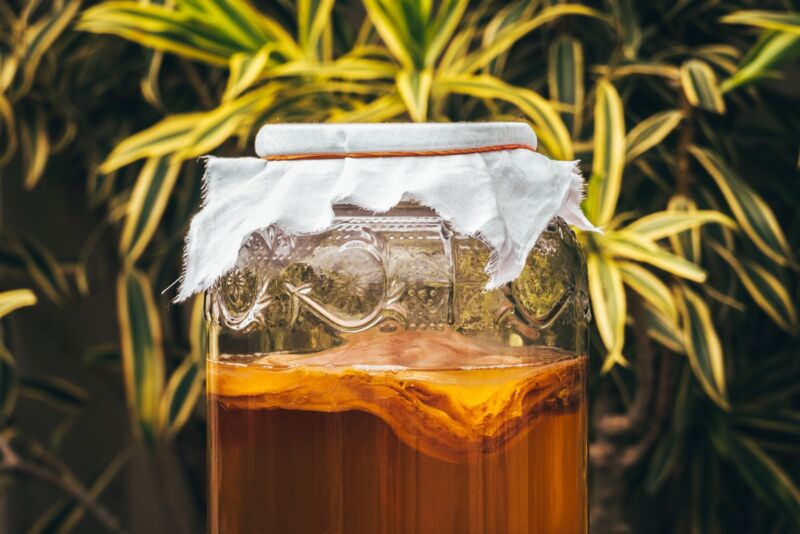Brewing kombucha in silicone bags makes for less alcohol, faster process
Ars Technica » Scientific Method 2024-03-18

Enlarge / Brewing kombucha tea. Note the trademark gel-like layer of SCOBY (symbiotic culture of bacteria and yeast). (credit: Olga Pankova/Getty Images)
Kombucha tea continues to grow in popularity as a healthy alternative to alcoholic beverages—and chemistry can help commercial and amateur brewers alike get faster and better results with their brews, according to a presentation yesterday at a meeting of the American Chemical Society in New Orleans.
“Brewers typically see making kombucha as an art more than a science,” Jeb Kegerreis, a physical chemist at Shippensburg University, said of the research. “So when we are doing a consultation, we also walk the brewer through the biochemistry of what’s happening during fermentation.”
As we've previously reported, you need just three basic ingredients to make kombucha. Just combine tea and sugar with a kombucha culture known as a SCOBY (symbiotic culture of bacteria and yeast), aka the "mother," also known as a tea mushroom, tea fungus, or a Manchurian mushroom. It's basically akin to a sourdough starter. A SCOBY is a firm, gel-like collection of cellulose fiber (biofilm), courtesy of the active bacteria in the culture creating the perfect breeding ground for the yeast and bacteria to flourish. Dissolve the sugar in non-chlorinated boiling water, then steep some tea leaves of your choice in the hot sugar water before discarding them.